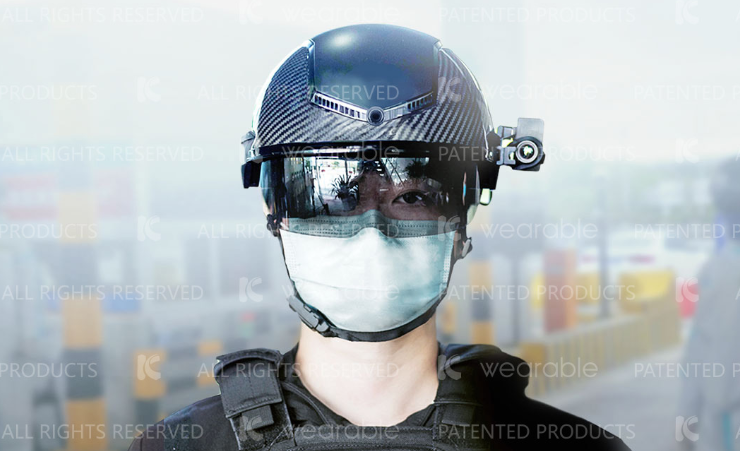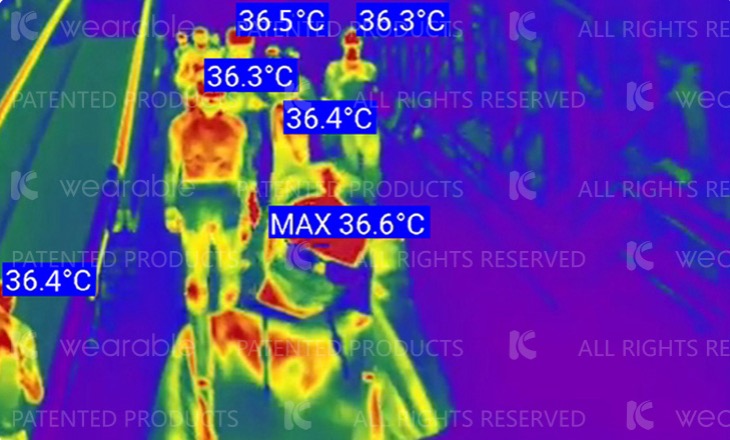Italian Airport Adopts Augmented Reality Thermal Scanning Helmets
The use of wearable thermal scanners in airports and other security checkpoints has been widely recommended in the wake of the COVID-19 pandemic raging across the world which has precipitated an acute need to maintain social distancing and help curb the spread of the pandemic.
Thermal scanners help detect a key coronavirus symptom- a high body temperature in public places without having to come into contact with the affected person. Italy’s busiest airport, Aeroporti di Roma-Fiumicino, is now adopting a smart thermal scanning helmet to help screen travelers and keep off the sick ones from the planes.

It uses the N901 smart helmet which has a similar design to that of the motorcycle or riot police helmets. The helmet has been manufactured by China’s Kuang-Chi Technology. It has a very robust design, very much unlike Vuzix’s trimmer M400 and Librestream Onsight Cube industrial wearables. The N901 smart helmet covers the eyes with tinted or mirrored lenses and have a large external thermal camera pointing forward. It has an intimidating military feel that some passengers might find unsettling but in the Post-coronavirus environment, such an inconvenient design may have to be wished away for the primary goal of keeping people safe as public places begin to gradually open up.
The helmet design has been described as “Robocop-like” and together with its separate masks, it has the potential to dehumanize the wearer and transform them into an intimidating presence. However, behind the large physical lens is a very functional color waveguide display that can serve multiple screening functions. Not only is it capable of screening several people simultaneously, but it can also trigger visual and sonic alarms if it detects a dangerously high temperature in a person.

The device also features a single-person temperature measurement mode. However, there is a “large crowd” version of the device which displays both the real-time heatmap as well as the maximum temperature readings that have been keyed to multiple individuals who have been identified via an Android-based hardware and software. These measurements can be taken from safe distances of 8 to 15 feet. For facial recognition, the traditional optical camera can be used when it is paired with Wi-Fi, 5G and Bluetooth hardware and then subsequently interfaced with a database to perform the facial recognition. This will enable the N901 thermal helmet wearers to make their way through the crowds and undertake mass scans instead of having to screen a person at a time. The mass scans also speed up the progress of security lines, helping the management to save time and costs.
The Rome airport is already deploying three N901 thermal scanners and there are plans to add more units as passenger travel picks up in the coming weeks. In the wake of the COVID-19 crisis and the need to remain vigilant after the crisis, it is possible that more airports might try this scanning solution to speed up things and keep travelers safe.
https://virtualrealitytimes.com/2020/05/13/italian-airport-adopts-augmented-reality-thermal-scanning-helmets/https://virtualrealitytimes.com/wp-content/uploads/2020/05/N901-Smart-Helmet-600x366.pnghttps://virtualrealitytimes.com/wp-content/uploads/2020/05/N901-Smart-Helmet-150x90.pngAugmented RealityTechnologyThe use of wearable thermal scanners in airports and other security checkpoints has been widely recommended in the wake of the COVID-19 pandemic raging across the world which has precipitated an acute need to maintain social distancing and help curb the spread of the pandemic. Thermal scanners help detect a...Sam OchanjiSam Ochanji[email protected]EditorVirtual Reality Times - Metaverse & VR
